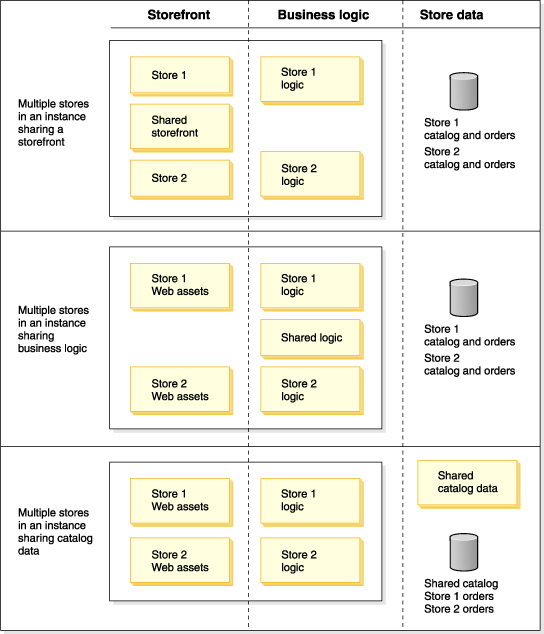
Examples of multiple stores in a single instance
WebSphere Commerce allows you to support multiple online stores within your WebSphere Commerce Server instance.
The following diagram illustrates some possible store configurations:

The stores detailed in the preceding diagram are stand alone stores. That is, although they are in the same instance, they do not share any data or have relationships with each other. They have separate storefronts, business logic and store data.
You can also create multiple stores in an instance that share the same storefront, the same business logic, or the same store data, including catalogs, or any combination of the three. The following diagram illustrates some possible configurations in which stores share assets:

Multiple stores can exist in a single Stores Web module. If so, the store assets are separated using the following methods:
- Storefront assets
- Storefront assets for each store in the Stores Web module are stored in a separate store directory (storedir). For example all storefront assets for MyStore are in the MyStore directory.
- Business logic
- The store ID is used to select the command implementation for each store, as specified in the command registry.
- Store data
- Data assets are identified for each store by a unique index. Store data can include core data assets (such as data about organizations, stores, or relationship between stores), the WebSphere Commerce instance data assets, configuration data assets (such as command, view, and URL registries), managed data (such as catalog, tax and shipping, and promotions), and operational data (such as inventory and orders).